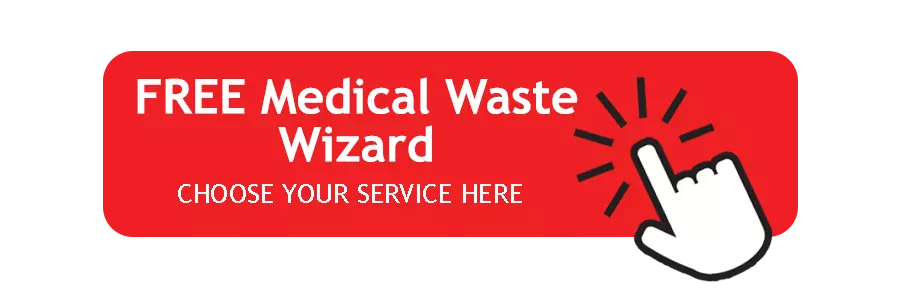Hazardous Waste Disposal
Find Reliable and Compliant Hazardous Waste Disposal Companies in Your Area
Hazardous waste disposal is tightly regulated. There are required procedures and government regulations on the federal, state, and local levels to ensure any hazardous medical waste you collect or produce is disposed of safely. With the help of Medical Waste Pros, we can not only help you identify the hazardous medical waste you need to dispose of but also find someone to safely dispose of it.
The responsible management of hazardous medical waste is important to protect the well-being of healthcare professionals, patients, and the environment. We specialize in offering comprehensive solutions that surpass industry standards for the meticulous handling and disposal of hazardous medical waste.
Our commitment to safety, regulatory compliance, and environmental consciousness sets us apart as a trusted partner for healthcare facilities, laboratories, and institutions seeking a reliable solution to the unique challenges posed by hazardous medical waste. Discover peace of mind and a heightened level of care with Medical Waste Pros as your dedicated provider of hazardous medical waste disposal services.
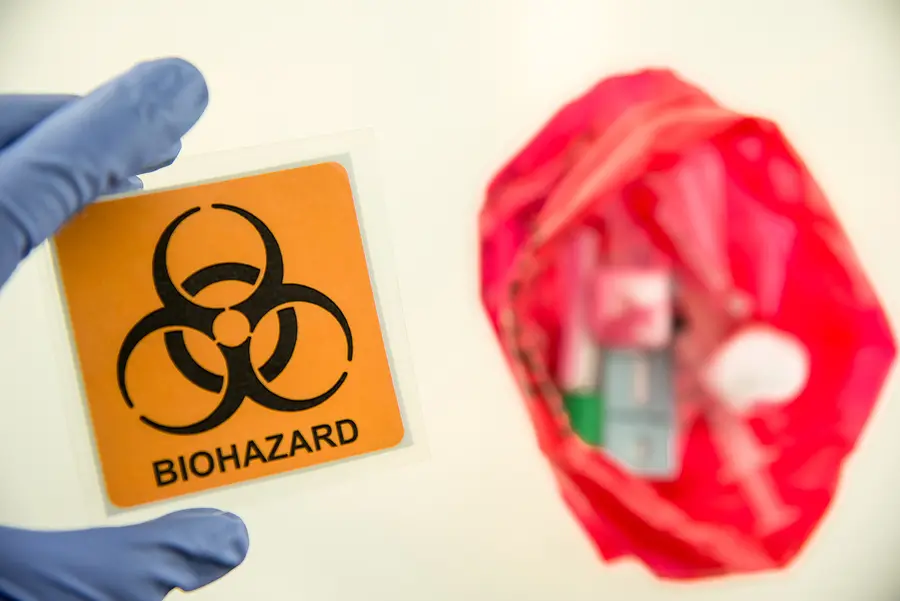
Our Hazardous Waste Disposal Options
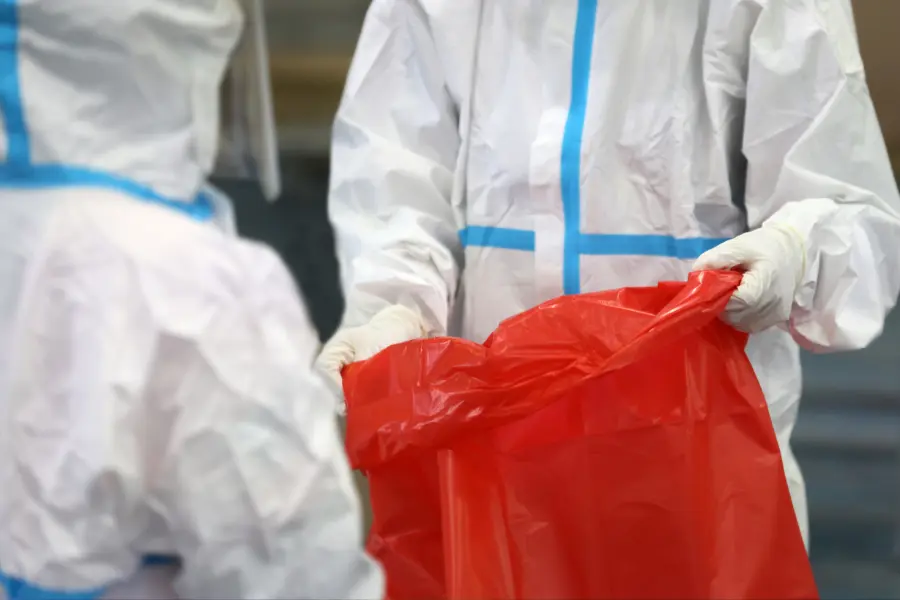
Regularly Scheduled Pickups
If you have a significant amount of hazardous medical waste to dispose of, our regularly scheduled service allows you to plan for ongoing pickup of medical waste. We schedule a time with your facility and will pick up and dispose of your hazardous medical waste based on your schedule, no matter if it’s daily, weekly, monthly, or quarterly.
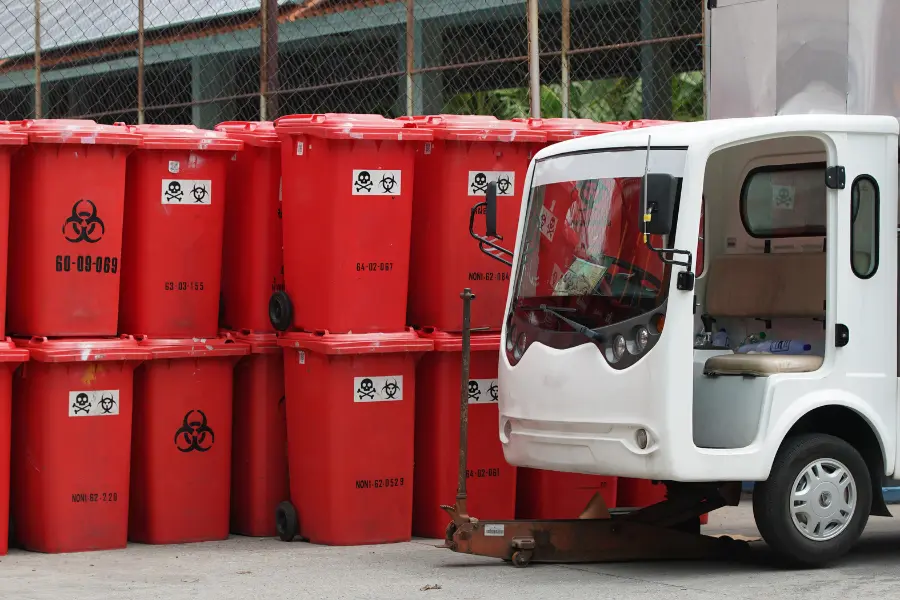
On-Call Pickups
We also offer on-call service for emergencies or facilities that don’t need hazardous medical waste pickup regularly (or only have a small amount that needs to be collected periodically). This service is identical to our regularly scheduled service but can be scheduled periodically whenever you need it.
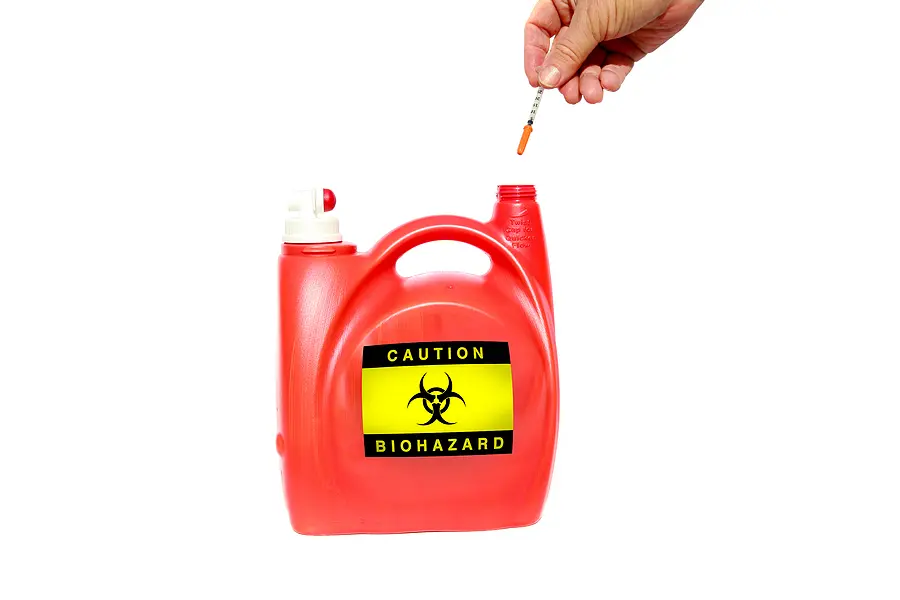
Mail-Back Services
A mail-back system is another safe, secure option to dispose of your medical waste properly. Each system includes all the components required to package your medical waste to be disposed of at a secure facility. Utilizing a mail-back system is an efficient way to collect, return, and dispose of hazardous sharps.
Why Choose Medical Waste Pros
Fast Turnaround
Get matched to a partner in 3-5 minutes. They will work with you to get a quote based on your specifications.
Nationwide Coverage
We have partners all over the United States.
Partnered with the Best
We have partners nationwide providing you with the best, secure options in your area.
What is Hazardous Waste?
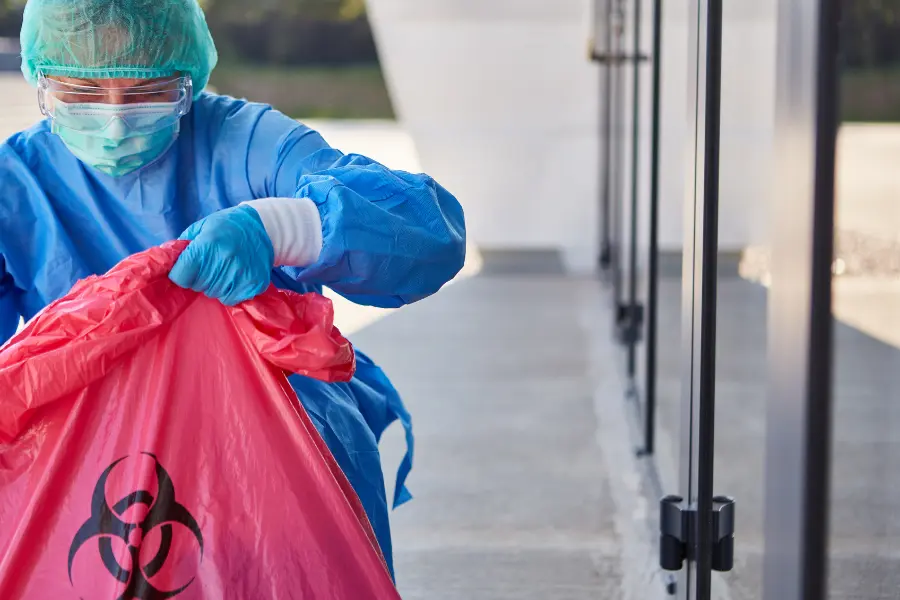
EPA regulatory guidelines define hazardous waste as any solid, liquid, or contained gaseous material that is no longer being used and is recycled, stored, or thrown away.
A waste is considered hazardous if it’s either one of 400+ items listed on the Resource Conservation and Recovery Act (RCRA) regulations or if it exhibits one of the following four hazardous waste characteristics defined below:
-
Ignitability: Something that catches on fire easily when exposed to heat (i.e. solvents, paint thinner, and gasoline)
-
Corrosivity: Substances that “Eat” other matter (i.e. battery acid, caustic paint strippers, and some floor cleaners)
-
Reactivity: Certain cyanides, sulfide-bearing, or any other items that are unstable, explosive, or toxic under pressure, when mixed with water or another substance, or exposed to heat
-
Toxicity: Anything that is harmful or fatal when ingested or absorbed
How Our Hazardous Medical Waste Disposal Services Work
- Contact Medical Waste Pros at (888) 755-6370, fill out the form, or use the live chat to connect to one of our medical waste disposal experts.
- Tell us about your medical waste disposal project with details like the type of medical waste you have and how much.
- We will connect you to safe and reliable medical waste disposal companies in your area equipped to handle your specific needs. They will send you free quotes on your project.
- Choose the provider that best meets your needs and budget. You will then connect with the provider you choose and set up your disposal services, whether it’s one-time, recurring, or mail-back.
- Your service provider will come to pick up your hazardous medical waste and properly dispose of it at their secure facility.
Why You Should Properly Dispose of Your Hazardous Medical Waste
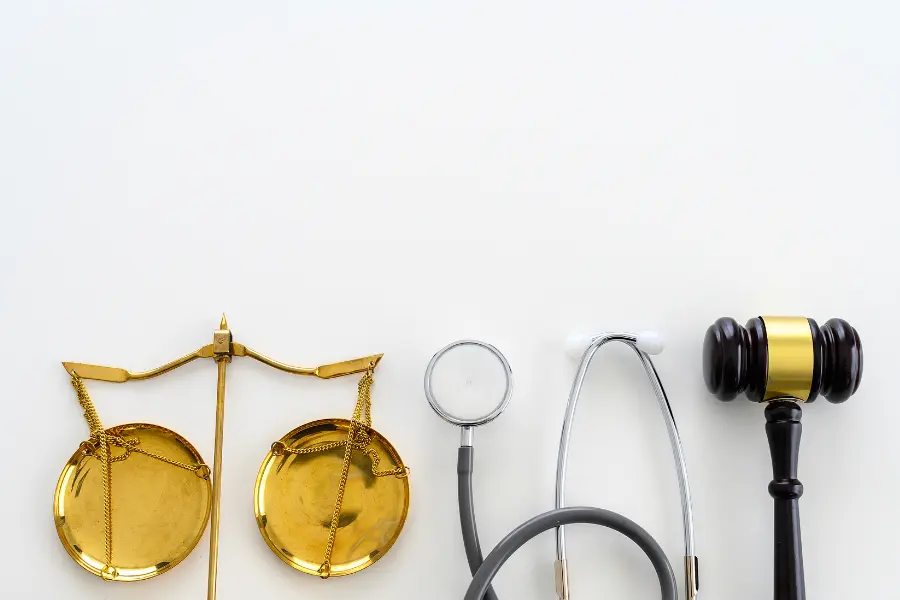
Compliance with Strict Regulations
Ensuring the proper disposal of hazardous medical waste is essential for compliance with strict local, state, and federal regulations. Adhering to these guidelines mitigates legal risks and potential penalties, safeguarding the reputation of healthcare facilities.
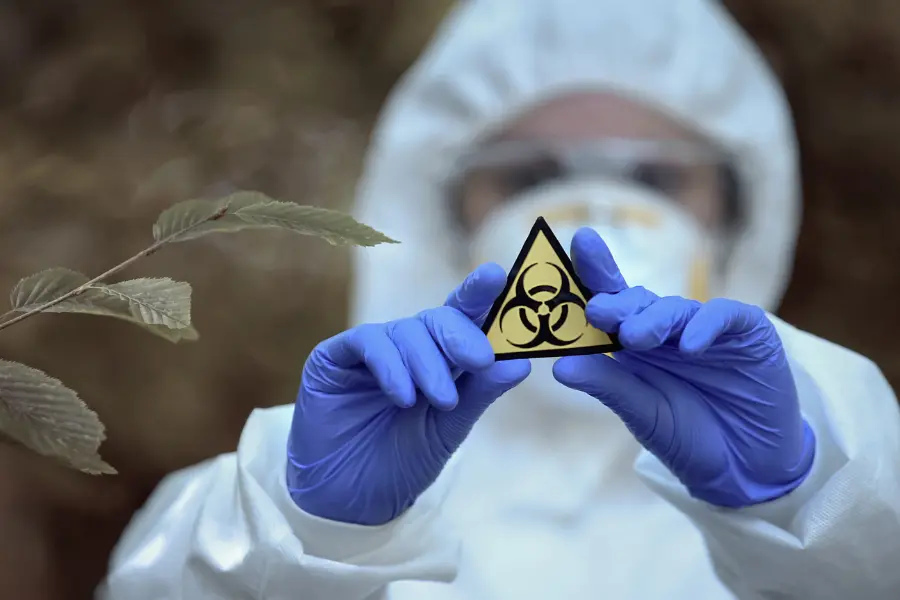
Protect Public and Environmental Health
Rigorous disposal practices for hazardous medical waste play a crucial role in preventing the release of harmful substances into the environment. This protects public health and preserves the integrity of ecosystems, ensuring that hazardous materials do not pose risks to communities or natural habitats.
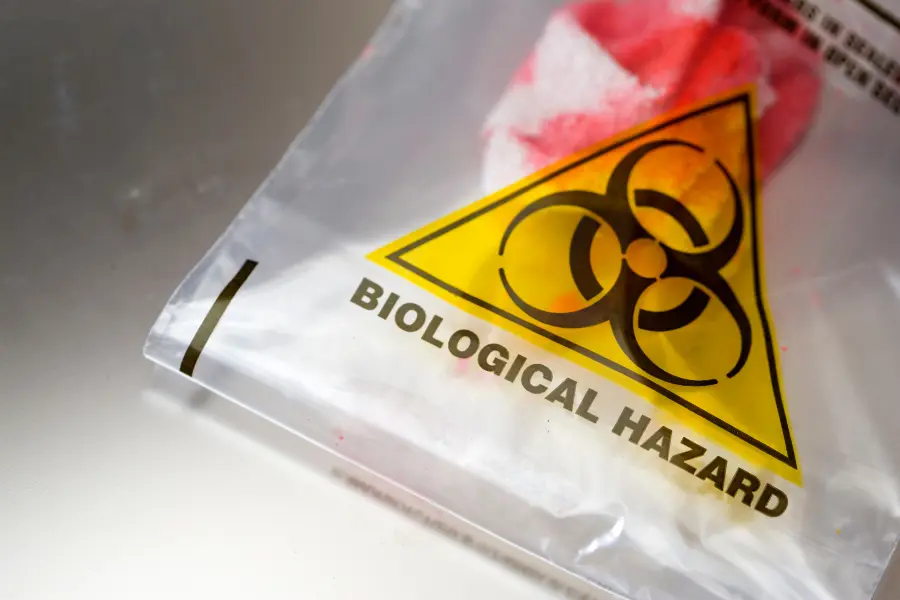
Prevent Contamination
Hazardous medical waste poses a risk of contamination if not handled and disposed of properly. Adopting strict disposal practices prevents the spread of infections and ensures that contaminants are contained, protecting both healthcare workers and the general public.
See What Our Customers Are Saying
Hazardous Medical Waste FAQs
What is hazardous medical waste?

There is a wide range of different hazardous medical wastes, including:
-
Organs and body parts
-
Bodily tissues from surgery and biopsies
-
Blood and bodily fluids
-
Cultures and microbiological specimens
-
Sharps (including needles, syringes, lancets, razors, and needleless injection devices)
-
Anything that could be contaminated with highly communicable diseases such as Ebola virus, tuberculosis, hepatitis, West Nile virus, STDs, and rabies
What is a hazardous waste manifest?

A hazardous waste manifest is a legal document that tracks the movement of hazardous waste from its point of generation to its final disposal or treatment facility. It serves as a critical tool in ensuring the proper handling, transportation, and disposal of hazardous waste while complying with environmental regulations.
Which pharmaceuticals are considered hazardous waste?

Some examples of pharmaceuticals that may be considered hazardous waste include:
-
Chemotherapy Drugs
-
Warfarin and Other Anticoagulants
-
Nicotine Replacement Therapies
-
Certain Antibiotics and Antimicrobials
-
Certain Hazardous Chemicals:
-
Narcotics and Controlled Substances
-
Hormones and Steroids
What other types of waste do you handle?

Medical Waste Pros can handle a variety of medical waste across different industries, including:
How much does a medical waste disposal service cost?

The price of your medical waste disposal service will depend on the method you choose, the type of waste you have, the amount of waste you have, and other factors. When you contact us with the details of your project, our service providers will send you accurate price quotes for your specific needs.
Does Medical Waste Pros use safe medical waste disposal methods?

Yes, all of our service providers follow all state and federal regulations when it comes to disposing of medical waste. They use methods such as autoclaving, chemical treatments, and EPA-approved incineration.
Can I just throw my medical waste away?

No, you can’t throw away medical waste. There are state and federal laws, including OSHA, FDA, DOT, and the EPA, that regulate how to dispose of medical waste. These regulations were put in place for your safety, in terms of the environment and health effects of improper disposal.
What goes in a sharps container?

Using an FDA-approved container, you can put these items in it:
- Needles and syringes
- Lancets and blood testing supplies
- Infusion sets and auto-injectors
- Scalpels and razor blades
- Broken glass and other sharp objects






